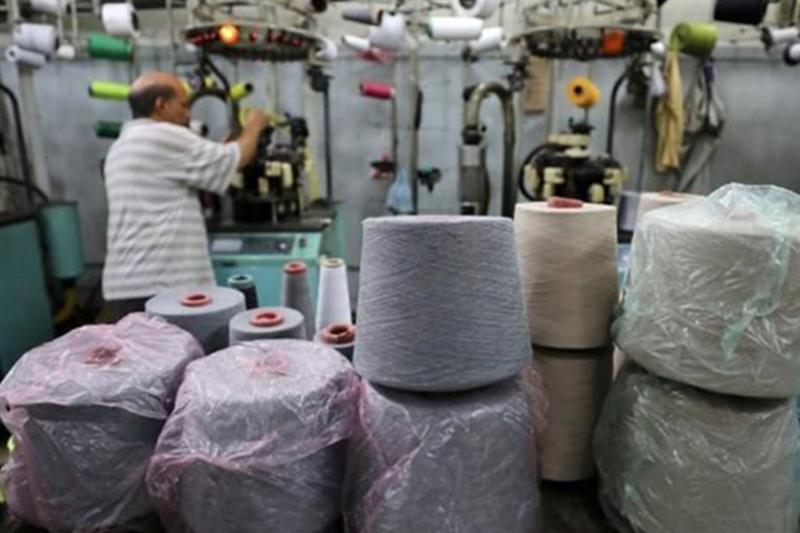Modernisation of textiles sector
Newspaper Title: english.ahram.org.eg
Newspaper Number:
Tuesday - 9 August 2022

As part of the cabinet-sponsored dialogue to discuss the State Ownership Policy Document that reviews Egypt’s public-sector industries, a workshop last week saw members of the government coming together with main players in the textiles industry to explore greater opportunities for the private sector.
The textiles industry is one of the sectors included in government plans to widen the role of the private sector.
Ahmed Mustafa, chair of the state-owned Cotton and Textiles Industries Holding Company (CTIHC), said that a larger role for private-sector textiles companies with their financing and production capacities would increase the sector’s contribution to GDP.
Textiles and ready-made garments (RMGs) account for three per cent of Egypt’s real GDP and contributed 11 per cent to the country’s non-oil exports in 2021, according to figures from the Industrial Modernisation Centre (IMC), an affiliate of the Ministry of Trade and Industry.
However, the figures do not compare with the large number of companies working in the sector, currently 4,600, representing a total investment of $6 billion and an overall labour force of 1.5 million workers, according to the IMC.
The Ministry of Public Business Sector has proceeded with plans to modernise the sector since 2019. Under the plans, 23 state-owned textiles companies have already been merged into eight. Massive investments of around LE23 billion are being pumped into CTIHC affiliates to provide new machinery, new buildings, and new staff.
Minister of the Public Business Sector Hisham Tawfik, whose portfolio focuses on upgrading and privatising state-owned companies, told Al-Ahram Weekly that as of the end of 2022 through the beginning of 2024, improved textiles factories under the plans would start production.
He said the ministry was working on improving their production capacity through scrapping old machinery in the 60 factories owned by the 23 companies.
Four factories have been passed to an Indian company for complete rehabilitation. “The outcome has been improving the production capacity over four-fold for high-quality products,” he said.
The modernisation plans have also included setting up a company under the name of the Egyptian Cotton Hub (ECH) to market the sector’s production of yarns and garments. The ECH is managed by foreign marketing experts.
It sells two made-in-Egypt textile brands, Nit, whose products have already been exported to Turkey, Denmark, Italy, and the US, and the cheaper brand Mahala.
Chair of the Textiles Industries Division at the Federation of Egyptian Industries Mohamed Al-Morshedi said that supporting marketing policies and production capacities was imperative as long as the state was keen on raising private-sector investments in the sector.
“Textiles production needs to be able to count on home-grown materials in order to increase the added value of products and increase export revenues,” he said.
He called for increasing public investment in the textiles industry, particularly in the dyeing and processing sectors, with a view to providing RMGs manufacturers with the necessary production inputs to fulfil their export targets.
He wanted to see the state play a greater role in producing synthetic fibres, as 55 per cent of these are currently imported.
A number of major players in the sector told the Weekly that discussions held on improving the textiles sector under the State Ownership Policy Document still lacked practical ways to deal with the challenges the industry is facing.
They believe that the investments the state plans to attract to the industry are built on ill-conceived data and studies that do not reflect the real situation of all sub-sectors.
The Apparel Export Council of Egypt (AECE) and the Textile Export Council released a joint statement followed the cabinet sponsored meetings counting the challenges the textile industry is facing currently.
According to the statement, the industry input prices have jumped by 30 percent, and the shipping costs recorded a 120 per cent increase both resulting in increasing production costs since the onset of the pandemic.
The statement also indicated that the sector’s factories lacks cash liquidity as a result of the raw materials prices increase.
In addition, the increase in imports and exports fees have added to the costs and thus decrease the competitiveness of Egyptian garment exports, according to the statement. “This issue represents a great challenge against the state’s plan to increase exports to $100 billion annually over the coming three years.”
Egypt’s textiles manufacturing industry is the second-largest industry in the country and was significantly affected by the Covid-19 pandemic.
Egypt’s textiles exports shrank by 14 per cent in 2020 to post $2.8 billion, down from $3.7 billion in 2019, according to the Textiles Exports Council.
The strengthening dollar, spiraling inflation, global supply chain disruptions, and economic uncertainty amid the ongoing Russian-Ukrainian conflict are major challenges the industry is currently facing.
The industry is anticipated to register a compound annual growth rate (CAGR) of over four per cent between 2022 and 2027, according to market advisory firm Mordor Intelligence.
Egypt is planning to open the world’s largest textiles factory in the Delta city of Mahalla with a daily production capacity of 30 tons. The government has announced incentives to grow high-quality cotton to meet the needs of the factory, which is expected to create opportunities for players operating in the market.
The factory was planned to be inaugurated in March 2022, but the repercussions of Covid-19 and spillovers from the war in Ukraine delayed the opening.
In further efforts to support the sector, Minister of Trade and Industry Nevine Gamea issued a decree in February establishing the Textiles Industries Council chaired by the minister and including representatives from the state and industry experts.
Gamea said that the action would help to develop Egypt’s textiles industries and coordinate efforts to strengthen sub-sectors with a view to carrying out overall strategic plans.